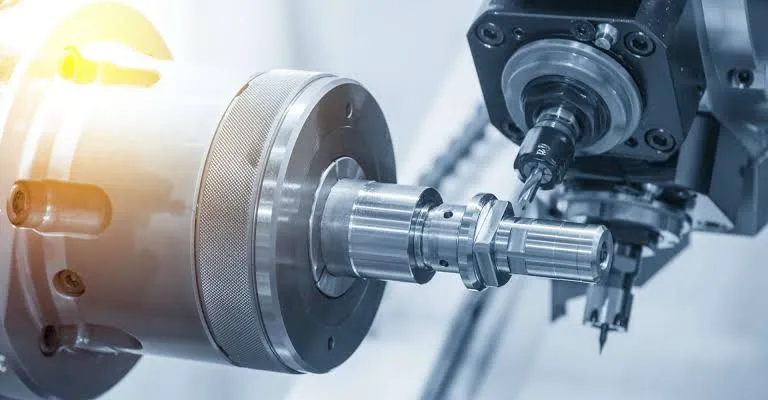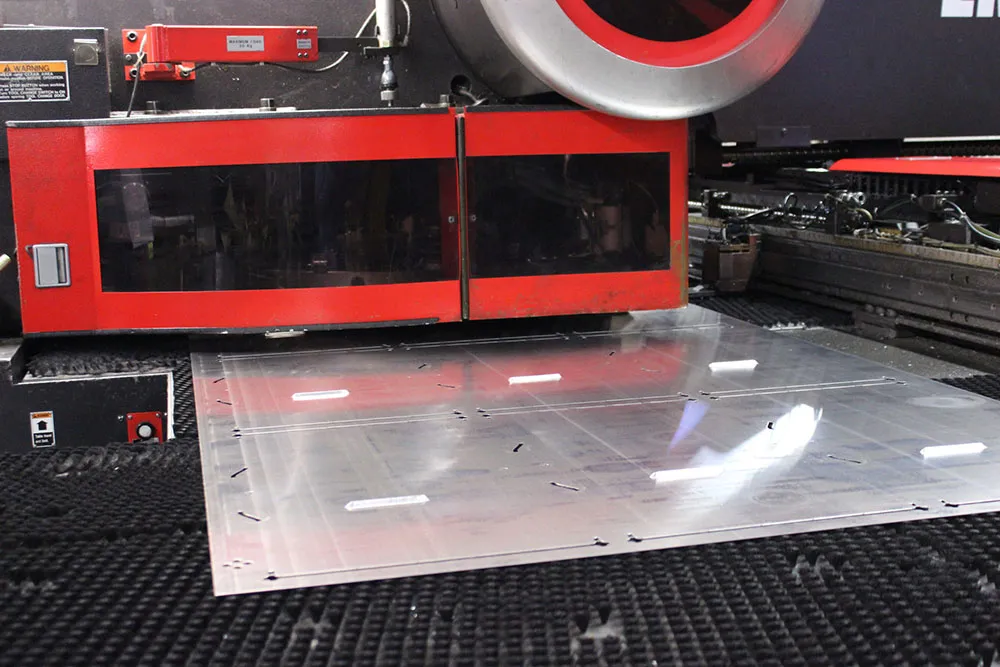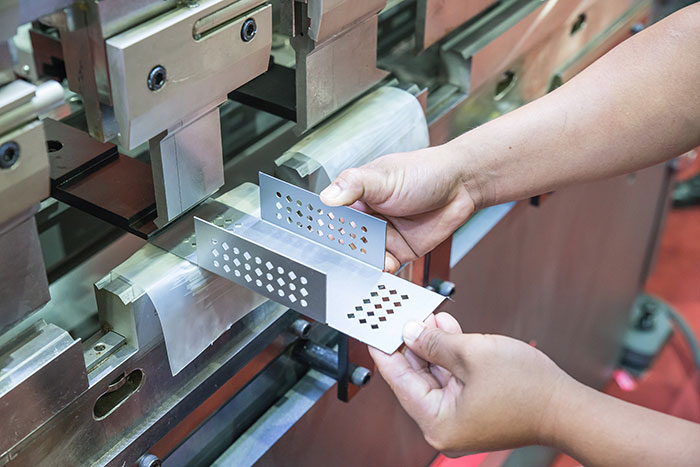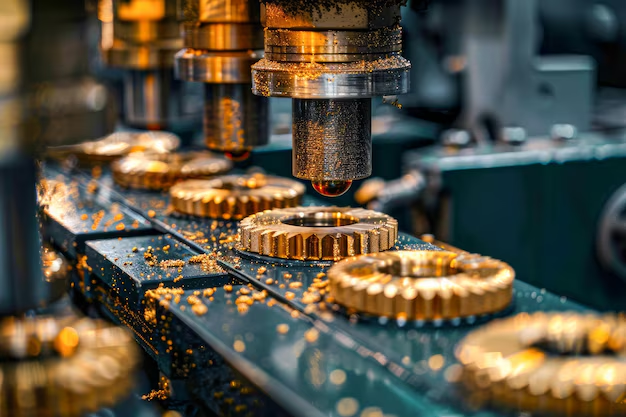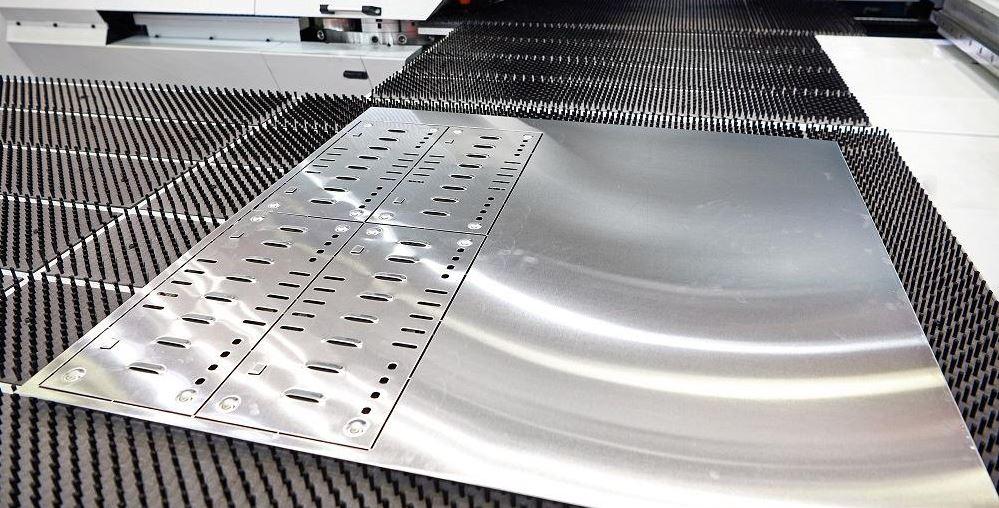whether it’s through the powerful strokes of sheet metal stamping or the precise cuts of CNC machining – we often get questions about the intricacies of different manufacturing processes. Today, we’re diving into the world of CNC lathes, those amazing machines that spin and sculpt raw material into incredibly accurate cylindrical parts.
Think of a CNC lathe like a highly skilled automated woodturner, but instead of wood, it works with metals (including, yes, sheet metal blanks that need further shaping!). It uses computer-controlled tools to precisely remove material, creating everything from simple shafts and bushings to complex gears and threaded components. But just like any skilled craft, there are crucial guidelines that need to be followed to ensure quality, efficiency, and safety.
The Foundation: Programming with Precision
The first and arguably most critical guideline revolves around programming. This is where the magic begins. A skilled programmer translates the design specifications into a language the CNC lathe understands (typically G-code). Accuracy here is paramount. Even a small error in the program can lead to a scrapped part, damaged tooling, or even a dangerous situation.
- Accurate Dimensions and Tolerances: The program must precisely reflect the required dimensions and tolerances of the final part. This includes diameters, lengths, angles, threads, and any other specific features.
- Tool Selection and Path Optimization: Choosing the right cutting tools for the material and the specific operation is crucial. The program also needs to define the optimal tool path – how the tool will move to remove material efficiently and effectively, minimizing cycle time and maximizing tool life.
- Spindle Speed and Feed Rate Control: These parameters dictate how fast the workpiece spins and how quickly the cutting tool moves. Incorrect settings can lead to poor surface finish, excessive tool wear, or even tool breakage. Careful calculation and consideration of the material and tool are essential.
- Collision Avoidance: The program must ensure that the cutting tools and the machine components never collide. This requires careful planning of tool changes and movements, especially in complex operations. Simulation software is often used to visualize the machining process and identify potential collisions before they happen.
Securing the Workpiece: The Art of Workholding
Once the program is ready, the next critical step is workholding – securely clamping the raw material (the workpiece) in the lathe’s chuck or other holding device. A properly secured workpiece is essential for accurate machining and operator safety.
- Choosing the Right Chuck or Fixture: Different workpieces require different holding methods. Three-jaw chucks are common for cylindrical stock, while collet chucks offer higher precision for smaller diameters. For irregularly shaped parts, custom fixtures might be necessary.
- Ensuring Secure Clamping: The workpiece must be clamped tightly enough to prevent movement or slippage during the cutting process. However, excessive clamping force can deform the workpiece. Finding the right balance is key.
- Proper Alignment and Runout: The workpiece must be accurately aligned with the lathe’s spindle. Runout (the amount of wobble as the workpiece rotates) must be minimized to ensure concentricity and accuracy of the machined features.
The Cutting Edge: Tooling and Maintenance
The cutting tools are the heart of the material removal process. Selecting and maintaining them correctly is vital for achieving the desired surface finish, accuracy, and efficiency.
- Selecting the Right Tool Geometry and Material: Different materials and machining operations (roughing, finishing, threading, etc.) require specific tool geometries and cutting tool materials (like carbide, high-speed steel, ceramics).
- Proper Tool Mounting and Setup: Tools must be mounted securely and accurately in the tool holder. The cutting edge must be positioned correctly relative to the workpiece.
- Regular Tool Inspection and Replacement: Cutting tools wear down over time. Regular inspection for wear and timely replacement are crucial to maintain quality and prevent tool breakage, which can damage the workpiece and the machine.
- Coolant Application: Applying the right type and amount of coolant helps to dissipate heat, lubricate the cutting process, and flush away chips. This improves tool life, surface finish, and machining efficiency.
Safety First: Prioritizing a Secure Environment
Safety is paramount in any machining operation. Strict adherence to safety guidelines protects the operator and the equipment.
- Proper Personal Protective Equipment (PPE): Operators must wear safety glasses, appropriate clothing, and other necessary PPE to protect themselves from flying chips, coolant, and machine hazards.
- Machine Guards and Interlocks: All safety guards and interlocks on the CNC lathe must be in proper working order and never bypassed. These protect the operator from moving parts.
- Chip Control and Removal: Effective chip management is essential to prevent chip buildup, which can interfere with the machining process and pose a safety hazard. Proper coolant flow and chip evacuation systems are crucial.
- Emergency Stop Procedures: Operators must be thoroughly familiar with the location and operation of the emergency stop buttons.
- Regular Machine Maintenance: Regular maintenance ensures the CNC lathe is in good working order and reduces the risk of malfunctions.
View Well: Precision Machining Alongside Expert Sheet Metal Fabrication
At View Well, our expertise isn’t limited to just sheet metal stamping. We also boast a sophisticated CNC machining department, equipped with advanced CNC lathes and a team of skilled machinists and programmers. This allows us to offer a comprehensive range of custom part manufacturing solutions.
Just like in our sheet metal operations, precision, quality, and efficiency are at the core of our CNC machining services. We adhere to stringent machining process guidelines to deliver parts that meet your exact specifications, whether they are turned components, milled features on stamped parts, or fully machined pieces.
Why Partner with View Well for Your CNC and Sheet Metal Needs?
- One-Stop Shop: We offer both advanced sheet metal fabrication and precision CNC machining under one roof, streamlining your supply chain and simplifying project management.
- Expertise Across Materials: We have extensive experience working with a wide range of metals, ensuring the right material and process are chosen for your application.
- Commitment to Quality: Our rigorous quality control standards apply to both our sheet metal and CNC machining operations, guaranteeing the accuracy and reliability of your parts.
- Collaborative Approach: We work closely with you from design to delivery, ensuring your vision is realized with the highest level of precision and efficiency.
Ready to Experience the Precision of View Well’s CNC Machining and Sheet Metal Expertise?
If your projects require precision-turned components or expertly crafted sheet metal parts, View Well is your ideal partner. We are dedicated to providing high-quality manufacturing solutions that meet your unique needs.
Contact us today to discuss your CNC machining and sheet metal requirements. Let us show you how our expertise and commitment to excellence can benefit your business.

